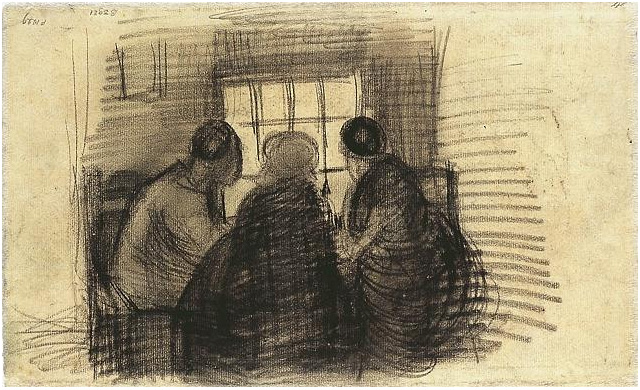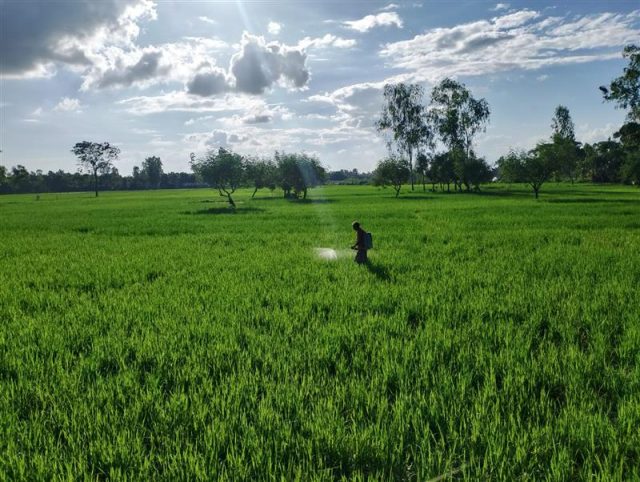Eating stories: On the contested future of meat–with, and without, feet
- From
-
Published on
18.04.19
- Impact Area

Sketch of three people sharing a meal by Vincent Van Gogh (Van Gogh Gallery).
In the excerpts below, Alexandra Sexton, geographer and postdoctoral researcher at the University of Oxford, offers ‘a more nuanced reading of the promissory and counter-narratives around recent alternative proteins than has sometimes been relayed in public discussions on this topic.’
‘This blog is an overview of the open-access article Framing the future of food: The contested promises of alternative proteins, written by Alexandra Sexton, Tara Garnett and Jamie Lorimer and published in Environment and Planning E: Nature & Space. Its findings were also included in a recent World Economic Forum report entitled Meat: The Future Series–Alternative Proteins.
When we eat food we eat stories.
‘Think about your last trip to the supermarket. Many of the labels will tell you of the places and people that have brought the different products to the aisles. A family farm in North Yorkshire, a cocoa grower in Ghana. They may also feature images of those places and people, and sometimes the animals involved in production. There may be accompanying stories of social justice, environmental care and healthfulness told through traffic light systems and the logos of certification schemes (e.g. Fairtrade, Soil Association).
At the very least, most food comes packaged with stories of its taste.
‘Millions of dollars are spent on these particular narratives by food businesses. The “finger lickin’ good” of KFC. The “Taste the Difference” of Sainsbury’s. The slow-motion sequences of melting chocolate, sizzling steaks and fizzing wines of Marks & Spencer’s. All are designed to get us tasting the products before we’ve even touched them. Taste, along with price and convenience, has been shown to be one of the biggest drivers of how and what we choose to eat.
Related news
-

New Genomic Discovery from ICRISAT Could Save Farmers Millions by Preventing Groundnut Sprouting Before Harvest
International Crops Research Institute for the Semi-Arid Tropics (ICRISAT)02.12.25-
Food security
-
Poverty reduction, livelihoods & jobs
Breakthrough study identifies varieties and key genes to halt sprouting before harvest in groundnut …
Read more -
-

Reinventing Kenya’s Snack Future with Dryland Grains
International Crops Research Institute for the Semi-Arid Tropics (ICRISAT)21.11.25-
Nutrition
-
Poverty reduction, livelihoods & jobs
Faces of Impact - Video Feature Story On a quiet backstreet in Mihango, Kenya, the…
Read more -
-

Cultivating climate-smart rice: How specific cultivars and smarter fertilizing can cut emissions and maintain yield
International Rice Research Institute (IRRI)19.11.25-
Climate adaptation & mitigation
-
Food security
By Bushra Humaira Sadaf A team of researchers from the Bangladesh Rice Research Institute (BRRI), I…
Read more -
